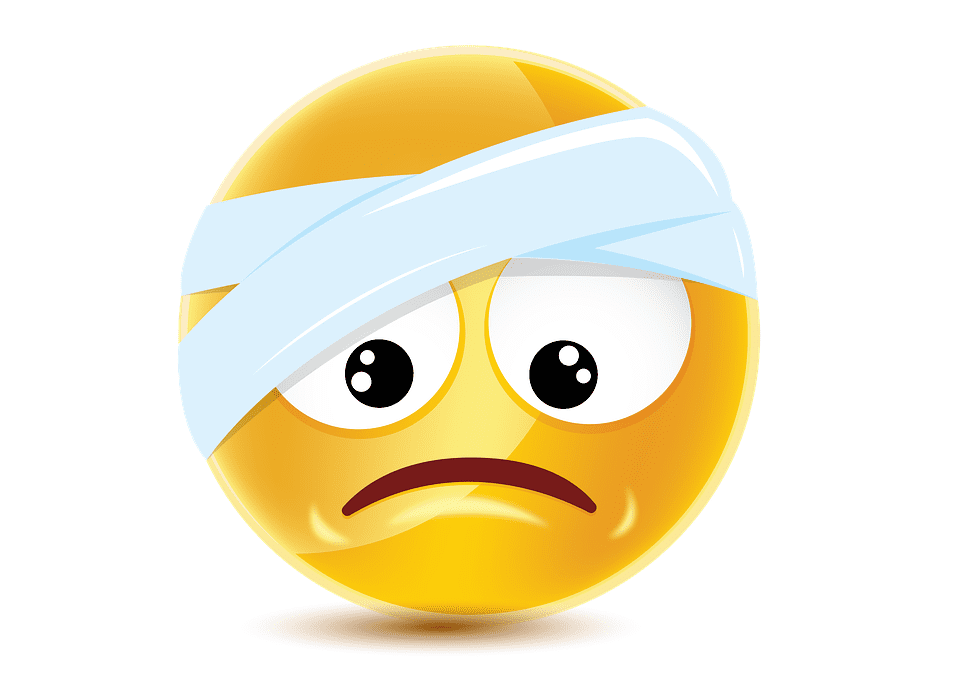As parents, few things send shivers down our spines like the sight of our little ones feeling unwell. A sniffle here, a cough there, vomiting, – these seemingly minor glitches can quickly escalate into a whirlwind of parental worry and sleepless nights. And yet, childhood illnesses are a natural part of growing up and quite common.
While they can be stressful for both parents and children, many can be managed effectively at home with a little TLC (tender loving care), proper care and attention.
This comprehensive guide equips you to tackle these situations with confidence. We take a look at the most frequently encountered childhood illnesses, explore effective home remedies, and provide practical tips to ensure a speedy recovery for your precious one.
Here are the Common Childhood Illnesses:

1. Common Cold and Flu
These viral infections top the charts. The common cold and flu are both respiratory illnesses caused by different viruses with differences in symptoms and severity.
The common cold is usually mild and may cause symptoms such as a runny or stuffy nose, sneezing, sore throat, cough, mild fever, and general fatigue. It is most commonly caused by rhinoviruses, but other viruses like coronaviruses and adenoviruses can also cause colds.
In contrast, the flu (influenza) tends to be more severe. It can cause symptoms such as high fever, chills, body aches, fatigue, headache, cough, sore throat, and congestion. Influenza viruses are responsible for the flu, and they can lead to complications such as pneumonia, especially in young children, older adults, and individuals with weakened immune systems.
While antibiotics won’t help, plenty of rest, fluids like lukewarm water or diluted fruit juices, and a cool-mist humidifier can ease congestion. A saline nasal spray can help clear stuffy noses in older children.
2. Ear Infections
Ear infections in children are common and typically occur when fluid becomes trapped behind the eardrum. This can lead to inflammation and infection. They are often caused by bacteria or viruses and can occur in the middle ear (otitis media) or outer ear (otitis externa).
Ear infections can cause ear pain, fever, and fussiness. To help alleviate symptoms, apply a warm compress to the affected ear and give your child over-the-counter pain relievers as recommended by their doctor. It is important to consult with a healthcare provider if you suspect your child has a serious ear infection to determine if antibiotics are needed.
3. Stomach Flu (Gastroenteritis)
Stomach flu, also known as viral gastroenteritis, is a common illness in children. It is characterized by inflammation of the stomach and intestines. It is typically caused by viruses, most commonly norovirus or rotavirus, although other viruses can also be responsible.
Symptoms of stomach flu in children may include nausea, vomiting, diarrhea, stomach cramps, fever, headache, and muscle aches. These symptoms can range from mild to severe and can lead to dehydration, especially in young children.
To manage stomach flu at home, encourage your child to drink clear fluids like water, electrolyte solutions (mix 1/2 teaspoon salt and 6 teaspoons sugar in 1 liter of water), or oral rehydration solutions to prevent dehydration. Avoid fatty and solid foods until vomiting has subsided. Reintroduce bland foods like crackers, rice, and bananas gradually.
4. Teething
Teething illness in children refers to symptoms that some infants experience as their baby teeth emerge through the gums. While teething itself is a normal developmental process, it can be accompanied by mild symptoms such as drooling, irritability, gum swelling, and a slight increase in temperature. However, these symptoms are typically temporary and not severe.
Teethers, chilled washcloths to gnaw on, and gentle gum massage can provide relief. Over-the-counter pain relievers appropriate for your child’s age may also be helpful.
5. Diarrhea
Diarrhea in children is characterized by frequent, loose, or watery stools. It’s often caused by viral or bacterial infections, such as gastroenteritis, but can also result from food poisoning, certain medications, or dietary factors. While some diarrhea resolves on its own, keep a watchful eye for signs of dehydration. Offer plenty of fluids and bland foods like rice, toast, or bananas. Avoid dairy products, greasy foods, and sugary drinks that can worsen symptoms.
6. Fever
Fever is a common symptom of many childhood illnesses and is usually a sign that the body is fighting off an infection. If your child has a fever, make sure they stay hydrated and dress them lightly to help reduce body temperature. Over-the-counter fever reducers like acetaminophen or ibuprofen can also be used to bring down a fever, but always consult with your child’s doctor for appropriate dosage.
7. Sore Throat
A sore throat can be caused by viral or bacterial infections and may be accompanied by other symptoms like fever and cough. Encourage your child to gargle with warm salt water to soothe the throat and provide cool, soft foods like popsicles or smoothies to ease discomfort. Honey and warm herbal teas can also help relieve soreness in the throat.
8. Rashes and Skin Irritations
Common childhood rashes like diaper rash, eczema, and hives can cause discomfort and itching. To manage skin irritations at home, keep the affected area clean and dry, and apply gentle moisturizers or barrier creams as recommended. Avoid using harsh soaps or lotions that may aggravate the skin, and consult with a pediatrician if the rash persists or worsens.
9. Vomiting
Vomiting in children can be caused by viruses, gastroenteritis (stomach flu), dietary indiscretion, motion sickness, or even ear infections. The key is to stay calm, manage the symptoms, and prevent dehydration, the most significant risk with vomiting in children.
For the first 24 hours after vomiting, withhold solid foods. This allows the stomach to rest and settle. Offer small, frequent sips (think teaspoons or tablespoons every few minutes) of clear liquids like water, diluted fruit juices (apple juice is a good option), or Pedialyte. Oral rehydration solutions (ORS) are particularly helpful as they replenish electrolytes lost through vomiting.
10. Headaches
Headaches are a common occurrence in children, just like in adults. While they can be unsettling, most childhood headaches are harmless and can be effectively managed at home.
- Tension Headaches are the most common type and often present as a dull ache or pressure on both sides of the head. They can be caused by stress, dehydration, lack of sleep, eyestrain, or skipping meals.
- Migraines are less frequent but more intense. Migraines cause throbbing pain, often on one side of the head, and may be accompanied by nausea, vomiting, and sensitivity to light or sound. These can be triggered by various factors like stress, certain foods, hormonal changes, or lack of sleep.
For childhood headaches, create a calming environment for rest, ensure they stay hydrated, and apply a cool compress. Gentle scalp massages may help, and over-the-counter pain relievers are an option for older children (with proper dosage). To prevent future headaches, focus on a regular sleep schedule, healthy eating habits, consistent hydration, stress management techniques, and limiting screen time.
Remember, if you have any concerns or if symptoms worsen, don’t hesitate to reach out to your pediatrician for guidance.
Home Remedies for Speedy Recovery

- Hydration is Key: This applies to most conditions mentioned above. Encourage plenty of fluids – water, diluted fruit juices, or Pedialyte – to prevent dehydration, especially with fever, vomiting, or diarrhea.
- Rest and Recuperation: Let your child’s body focus on healing. Create a calm environment with dimmed lights, favorite books, and quiet activities. Let them sleep when they need it.
- Soothing Sore Throats: A saltwater gargle (mix 1/4 teaspoon table salt in a cup of warm water) can provide relief for older children. Offer popsicles or cool, soft foods like applesauce to numb the discomfort.
- Combating Coughs: A cool-mist humidifier loosens mucus and eases coughs. Encourage plenty of fluids and elevate your child’s head with extra pillows for a more comfortable sleep.
- Comforting Fevers: Don’t panic! A fever is often the body’s natural response to fighting infection. Dress your child in lightweight clothes and keep the room cool. Lukewarm baths or tepid sponging can help bring down a fever. Over-the-counter fever reducers like acetaminophen or ibuprofen can also be used, following dosage instructions carefully.
- Soothing Stuffy Noses: Saline nasal drops or sprays can help clear congestion, especially in babies. A cool-mist humidifier loosens mucus and makes breathing easier.
Pro Tip Alert: Essential Tips for Managing Common Childhood Illnesses

- Know Your Child’s Baseline: Pay attention to your child’s usual behavior, appetite, and sleep patterns. This helps you identify deviations and potential issues earlier.
- Stock Up on Essentials: Having a well-stocked medicine cabinet with a thermometer, saline nasal spray, a cool-mist humidifier, and age-appropriate pain relievers can be a lifesaver when illness strikes.
- Monitor Symptoms: Keep track of your child’s temperature, appetite, and activity level. Watch for signs of worsening symptoms, such as persistent high fever, difficulty breathing, severe vomiting or diarrhea, or unusual behavior.
- Prioritize Self-Care: Taking care of yourself is crucial. Ensure you’re getting enough rest and healthy meals to have the energy to care for your child. Don’t be afraid to ask for help from family or friends.
- Seek Professional Help When Needed: Don’t hesitate to reach out to your pediatrician if symptoms worsen, persist for more than a few days, or you have any concerns.
Remember: Every child is unique, and their recovery timelines may vary. Trust your instincts, and don’t hesitate to consult your pediatrician if you have any concerns.
Bonus Tip: Preventing the Spread of Common Childhood Illnesses
- Frequent Handwashing: This is the single most effective way to prevent the spread of germs. Teach your children proper handwashing techniques with soap and water for at least 20 seconds.
- Covering Coughs and Sneezes: Encourage your child to cough or sneeze into their elbow or a tissue, and to dispose of the tissue properly.
- Disinfecting Surfaces: Regularly disinfect frequently touched surfaces like doorknobs, countertops, and toys to minimize the spread of germs.
- Vaccination is Key: Ensure your child’s vaccinations are up-to-date to protect them from serious illnesses.
By following these strategies and maintaining open communication with your pediatrician, you can effectively manage most common childhood illnesses at home, without visiting health facilities.





Leave a Reply